"Ferdinands" in the deep Soviet rear. Shelling and study
These monsters
It was precisely these hopes that the Führer placed on the brainchild of Dr. Ferdinand Porsche. In practice, in the very first moments of combat use, two Ferdinand were captured along with the crew. This happened at the beginning of the Battle of Kursk. The first car got bogged down in soft ground and was captured by the soldiers of the 123rd Infantry Division, and the second became an immobilized trophy after the destruction of the track. In general, of 89 participating in the battle of self-propelled guns, 39 were irretrievably lost by the Wehrmacht.
On June 20-21, 1943, in the vicinity of the Ponyry station, one Ferdinand was shot for scientific purposes. The corresponding order was given by the commander of the 13th Army, N.P. Pukhov. We give brief results of the shelling.
The 45-mm anti-tank gun of the 1937 model pierced armor from 300 meters only with an anti-caliber projectile with a probability of 33%. When firing virtually point-blank, that is, from 150 meters, the gun was guaranteed to hit the Ferdinand aboard. A 76-mm armor-piercing projectile from the ZIS-3 pierced the side from 400 meters, and an 85-mm anti-aircraft gun shell could hit a self-propelled gun from the side from 1200 meters. At the same time, the 85 mm blank did serious damage - it hits the opposite wall of the side, collapses, leaving no chance for the servant of the gun. The forehead of Ferdinand did not succumb to this gun, but with a successful shot it was possible to disable the radio station and control mechanics. The frontal armor plate mounting bolts also did not withstand 85 mm.
Analysis of the work of larger calibers on side armor also cannot be ignored. High-explosive shells with a caliber of 122 mm from a cannon of the 1931/37 sample did not penetrate the side, but the Ferdinand armored plates cracked and diverged at the seams. But the 122-mm howitzer of the 1938 model did not cause any special damage to the armor - only the trucks and rollers suffered.
Ferdinand waited for the next shelling from December 1 to December 14, 1943 at a training ground in Kubinka near Moscow. The first in the armored vehicle was tested the RPG-6, the latest cumulative anti-tank grenade at that time, which confidently pierced any armor in the side projection. Next was a 45 mm tank 20-K cannon, reliably hitting the side with a projectile from 100-200 meters. The British "Churchill" with a 57-mm QF cannon with a sub-caliber projectile hit the side of the German self-propelled guns at a distance of 0,5 km, and with an ordinary armor-piercing one - only from 300 meters. M4A2 "Sherman" with armor-piercing shells of a 75-mm gun left only dents on the sides and was only able to hit armor from 500 meters only twice. The domestic F-34 caliber 76 mm has never been able to cope with the side armor of a German car. They decided to get to the frontal armor of the Hitler monster only with a 122-mm D-25 gun, and the fire was fired exclusively from 1400 meters. Bottom line: neither the forehead of Fedinand nor the sides succumbed - only minor chips on the inner surface of the armor and bulging. As a result, the concrete piercing shell of the ML-1 howitzer gun ML-152 broke a Porsche armored vehicle from a distance of 20 km. The hole gaped rather big - 220x230 mm. An armor-piercing projectile of the same gun finally hit the forehead of Ferdinand from a distance of 1200 meters. Domestic testers, obviously, got into a rage and decided to bring the captured Panther to the shooting of a self-propelled gun - they walked it nearby at the training ground. KwK 42, although it had remarkable ballistics, but 75 mm was obviously not enough for defeating the Ferdinand's forehead (it was possible to break through it point-blank from 100 meters). The caliber projectile from the Panther confidently hit the board of its heavy counterpart from a distance of 900 meters, but a simple armor-piercing shell from just 100-200. Naturally, the Panther was fired back from the Ferdinand 88-mm StuK 43 gun. As a result, the inclined frontal armored plates of the German tank were reliably hit from 600 meters.
Of course, with the mass production of Ferdinand’s, they could become a serious threat to the tanks of the Red Army, and this had to be taken into account when developing the IS-2 and self-propelled guns based on the T-34. However, a circulation of 90 (or 91) copies made self-propelled guns such a rare technique on the battlefield that the soldiers often confused it with the Marders, Nashorn and Hummels.
Conclusions of the engineers of Kubinka
Military engineers at the test site of the Main Armored Directorate of the Red Army in Kubinka, after lengthy tests of the surviving Ferdinand, spoke of the self-propelled gun as a fairly reliable machine. They were repeated by the testers of the pilot plant No. 100 in Chelyabinsk, to whom they also sent one self-propelled guns. Of particular interest was the original suspension and electric transmission, and the ease of controlling a multi-ton machine was generally considered the best.
The weak points of Ferdinand, which the Red Army recommended to take into account, were, of course, poor agility, low speed and low maneuverability. They offered to hit with armor-piercing shells on the sides to the borders of the tracks - here the armor is only 60 mm, and vital nodes are located. If the self-propelled gun approached the distance of the dagger, it was possible to throw a bottle of Molotov cocktail into the blinds of the upper armor plate. Also, experts at the Kubinka training ground note that hatches above the neck of gas tanks located along the edges of the upper armor plate at the lower cut of the frontal part of the cabin, when hit by any projectile, break from weak loops, and gasoline ignites. The only thing left was to get into such a target with any shell. If artillerymen or tankers manage to get to the armored vehicle from behind, then you can shoot at the rear hatch of the wheelhouse. It turned out that it was not firmly fixed in the closed position, falls out from any projectile, and you can already throw Molotov cocktails and grenades into the open hatch. In general, it was a difficult goal - the German self-propelled gun "Ferdinand".
A few words should be said about the suspension of the German assault guns. The balancing rubber-torsion bar suspension surprised the military engineers of Kubinka a lot, and for a long time they searched for the reasons for developing such a tricky scheme. The engineer P. S. Cherednichenko, in the Bulletin of the Tank Industry, ponders extensively on this subject:
Particular attention is paid to rubber dampers, which are not designed for large deformation and become difficult on rough terrain. As a result, the self-propelled gun, barely accelerated, received sensitive blows through the suspension, which became a rigid system. Nevertheless, engineers believed that such a suspension is nevertheless of interest to the domestic tank industry as one example of use in heavy armored vehicles.
Let us pass on to the assessment by Soviet engineers of the feasibility of introducing an electric transmission at Ferdinand. It is noted that the control of such an armored vehicle is simpler and less tiring compared to tanks with a traditional mechanical transmission. Among the advantages of the transmission engineer lieutenant colonel I.M. Malyavin, who was engaged in the study of "Ferdinand" at the Kubinka training ground in 1943-1944, highlights the high speed of transfer from forward to back and back. In the Bulletin of the Tank Industry, an engineer, in particular, writes:
The author, obviously, from the operating experience of the not-so-successful gear shifting system on the T-34, appreciates the advantages of the Ferdinand electric transmission, pointing out the impossibility of its breakdown due to improper gear shifting. When it comes to the mass of the entire structure, it turns out that the electric transmission is at least 9% of the mass of the entire self-propelled guns! As IM Malyavin rightly notes, a mechanical transmission is usually 2-3 times lighter. Summing up, the author explains the reasons for installing a heavy and complex electric transmission on the Ferdinand. Firstly, this technique allows us to solve a number of complex issues of traffic and corner control in a new way, and secondly, it attracts the resources and experience of the highly developed German electrical industry for tank building.
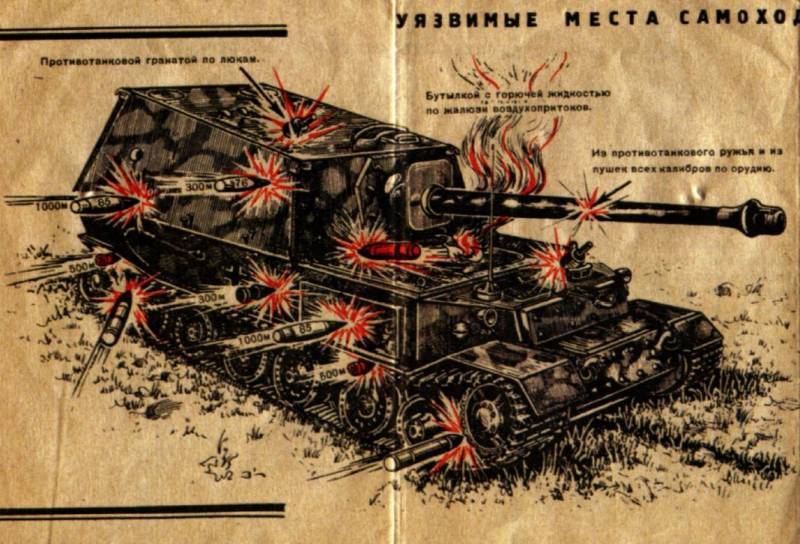
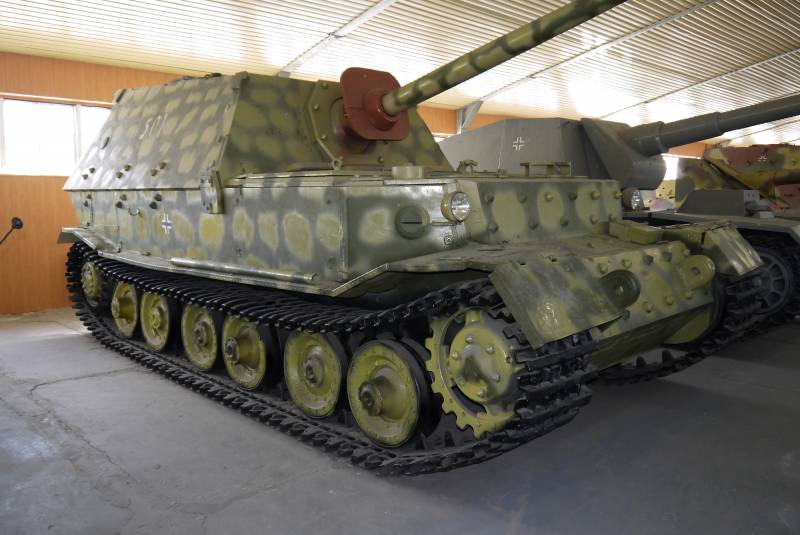
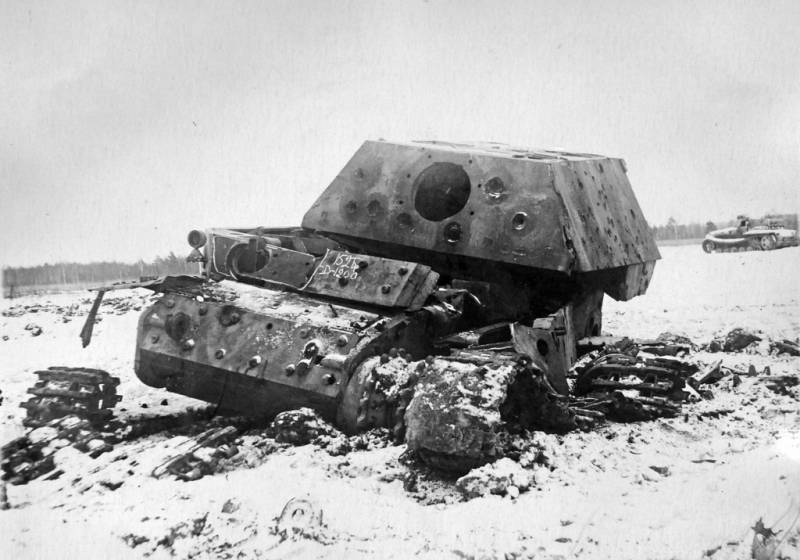
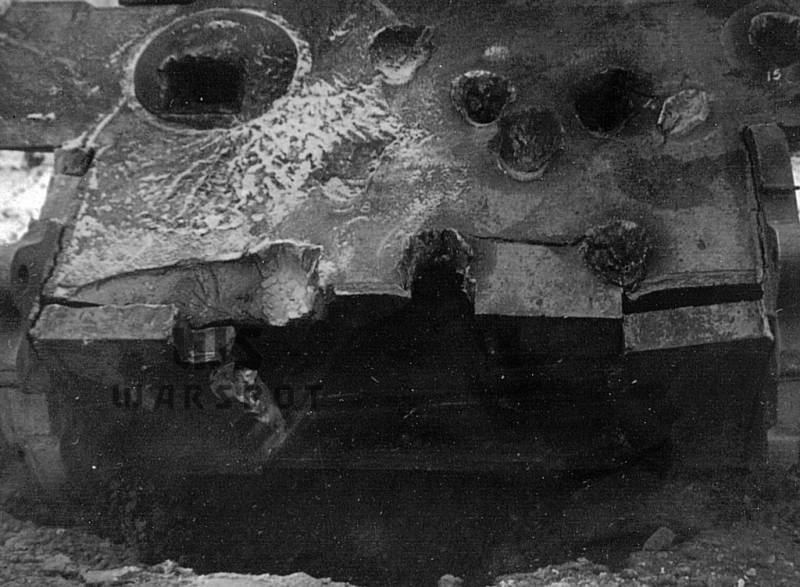
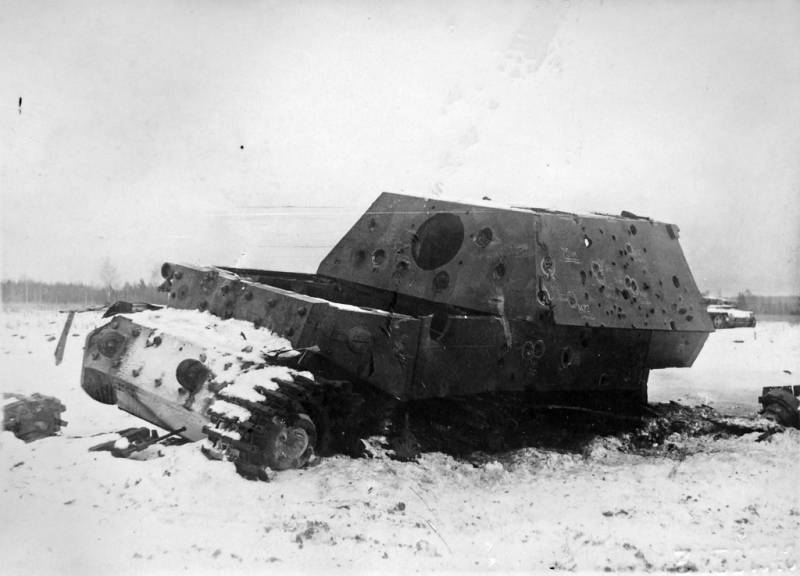
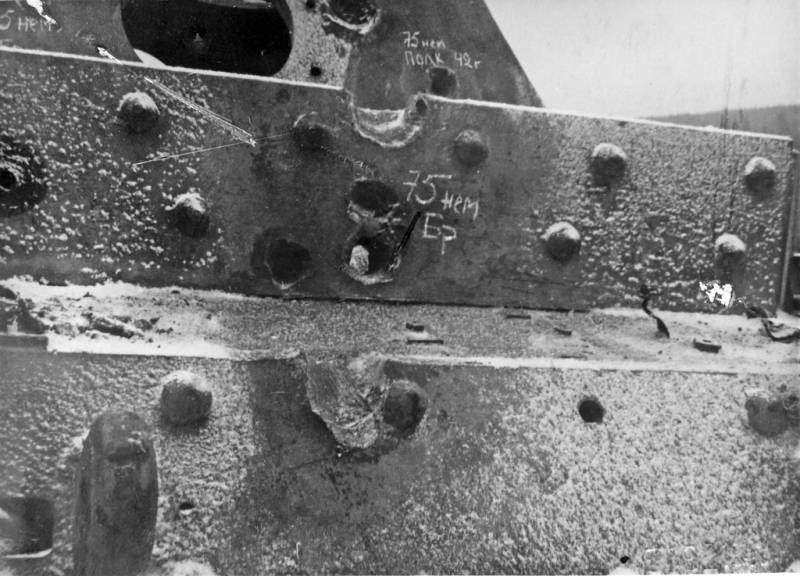
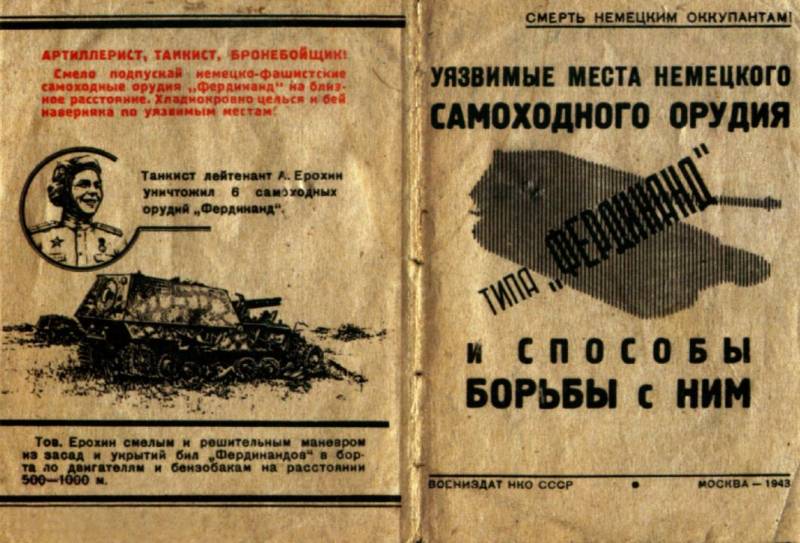
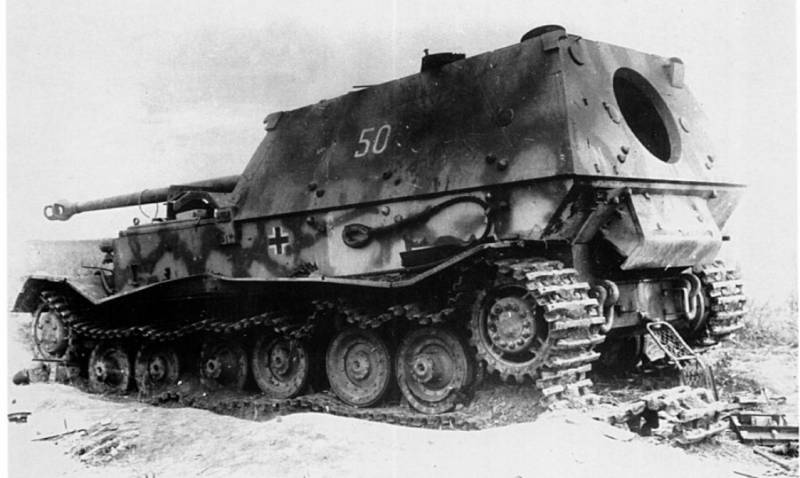
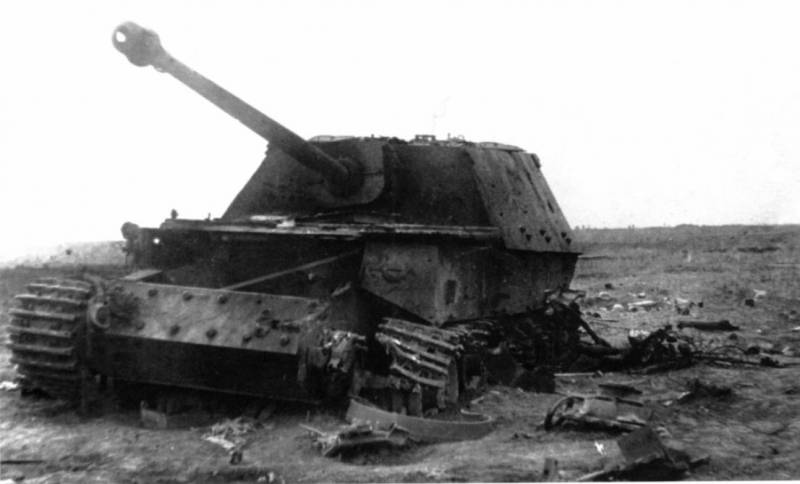
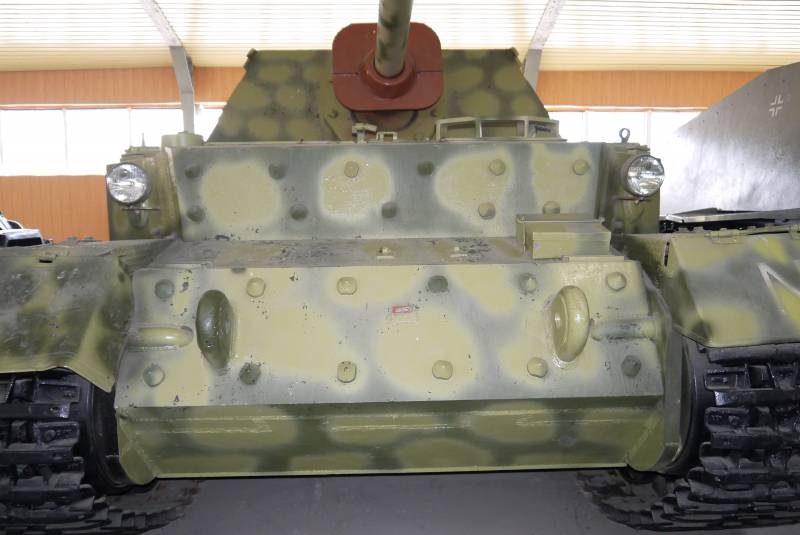
Information